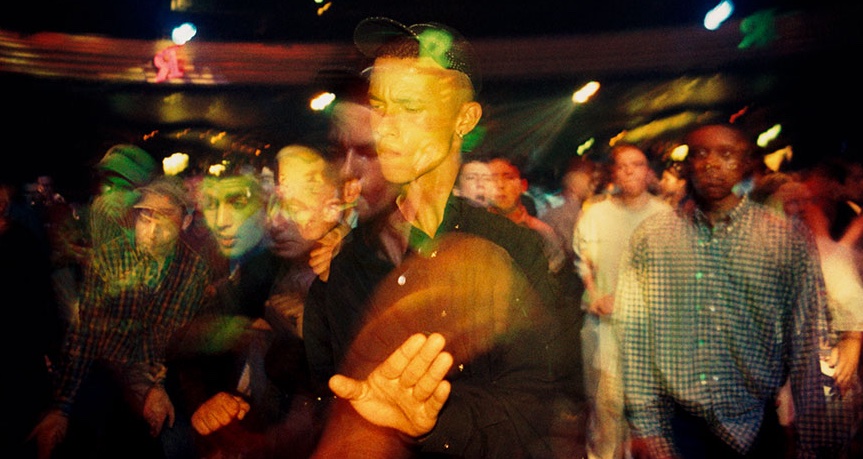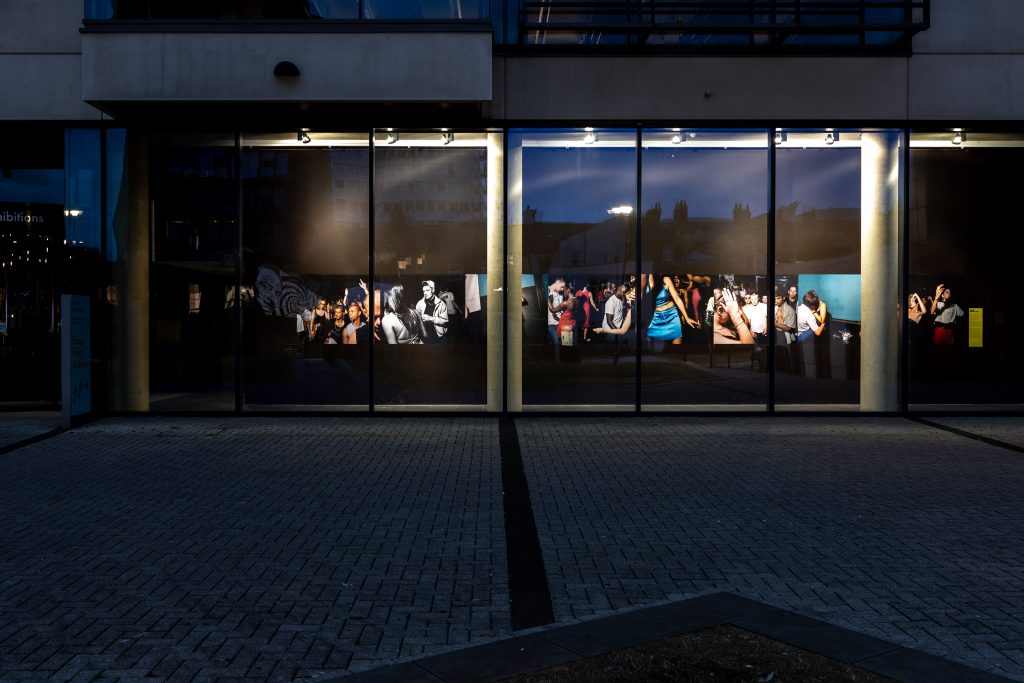The stunning electoral successes of France’s Rassemblement national over the past month have naturally elicited much reflection on the sources of this historic breakthrough for the country’s postwar far-right. The RN won 30 out of 81 seats in the EU elections in June: the largest parliamentary delegation of all parties in Europe, garnering more than double the vote share of Emmanuel Macron’s bloc. In the first round of the subsequent snap National Assembly elections, the RN secured 33% of the popular vote. The Nouveau Front populaire – a broad left-wing alliance that includes the Socialists, La France insoumise, the Greens and the Communists – trailed on 28%, with Macron’s Ensemble on just 20%.
The polls are predicting that the RN will nonetheless fall short of a workable majority in the second round on Sunday, blocked by a ‘Republican Front’ spanning the centre and parts of the left. A total of 221 candidates from the NFP and Macron’s Ensemble have pulled out of the race to avoid splitting the vote, although the distribution is uneven: 132 NFP candidates stood aside compared to 83 Macronists, and anti-RN candidates are still facing off against each other in three way contests in almost 100 constituencies. This reflects the centre’s reluctance to collaborate with Jean-Luc Mélenchon’s LFI, which many of them view as just as dangerous as the far right, if not more so. Some have speculated that in the event of a hung parliament, Macron will resign and use a controversial interpretation of the constitution to run for another presidential term. But such a coup d’état would be extremely risky. It is more likely that he will try to appoint a ‘moderate’ Prime Minister who could assemble a government comprising figures like François Hollande, who has been working hard to launder his reputation, Macron’s former Health Minister Aurélien Rousseau, a candidate for the NFP, and even the LFI dissident François Ruffin. This formation would then pave the way for an anti-Mélenchon unity candidate in the 2027 presidential election, reconsolidating the centre and excluding the ‘extremes’. Even if the RN is prevented from forming a government this time, though, the party will likely be in a strong position to style itself as the country’s sole opposition and bide its time until the next vote.
Which regions and factors are driving the striking upswing in support for the RN? There has so far been little discussion of the RN’s strong showings in parts of the country hitherto resistant to the far-right. In the EU elections, the RN list came out on top in all the socio-demographic categories analysed by the pollsters, including households in the top income quartile. Among intermediate occupations, such as clerical and sales jobs, the RN vote jumped from 19% to 29%. The leap was even bigger among those with at least two years of higher education: from 16% to 29%. The party is also making headway among managers and retirees. It is now on 20% among the former, on par with the Socialist Party (and up from 13% in 2019); among the latter, the RN holds a considerable lead: 29% of retirees compared with 23% for the Macron list. Symptomatic of the normalization of the RN vote, in the European elections the far-right lists came out on top in the affluent 16th arrondissement of Paris, a historic bastion of the liberal right.
All of this urges some reconsideration of the composition of the Lepéniste electorate. The dominant view, relentlessly voiced by the mainstream media and party leaders, has been that the RN vote is a cry from the heart of France’s ‘forgotten people’ – those overlooked by Europe, globalization, the elites and, above all, the left. According to this perspective, formerly Communist working-class communities have drifted to the far-right, driven by the successive betrayals of social democracy and progressive movements. Pundits repeat the notion that the RN – France’s leading workers’ party in the polls – is heir to the conservative, family-oriented values that characterized the old PCF. Geographically, their vote is perceived as rooted in ‘La France périphérique’, to use the phrase popularized by Christophe Guilluy: depressed rural areas far from major transport hubs and dynamic employment centres. This so-called ‘gaucho-lepéniste’ thesis forms the backdrop to Didier Eribon’s Retour à Reims (2009), in which Eribon recounts the political trajectory of his northeastern working-class family, from the PCF to the Front national, the predecessor to the RN.
It is certainly true that the FN has long made efforts to establish a presence in the north and north-east – most emblematically the parachuting in of Marine Le Pen in 2012 and her election in the 2017 legislative elections in Hénin-Beaumont, the heart of the former mining area of Hauts-de-France. However, to locate the FN/RN’s base in deindustrialized areas and former PCF voters is too simplistic. An abundance of social science literature highlights the protean nature of its vote, while the data shows that abstention remains by far the most common option among those who once would have voted for the PCF. Although voting patterns regularly show the FN/RN in the lead among blue-collar workers, it is important to note that the INSEE classification includes small-scale tradespeople, a stratum that has always been drawn to the right. Think of the ‘petits métiers’ of nineteenth-century naturalist novels, whose ambivalence towards both the bosses and revolutionary ideas is evoked in Zola’s L’Assommoir. Today, these occupations – butchers, gardeners, lorry drivers, garage mechanics and builders – are statistically the most numerous among the working class. These are jobs that cannot easily be offshored. Unlike factory work, which has been shrinking since the 1980s, they have been relatively spared by globalisation.
A more nuanced version of the ‘gaucho-lepéniste’ thesis requires a clearer understanding of the evolving and often contradictory politics of the party itself. Many argue that the RN (and the FN before it) are ‘bifrons’, or two-faced – appealing to both right and left. This too can be overstated. The RN’s ‘social’ tilt was promoted in particular by Marine Le Pen’s erstwhile right-hand man Florian Philippot, a former chevènementiste who encouraged the party to present itself as the champion of those caught between the big guys who monopolize everything and the little guys – the unemployed and idle immigrants – who produce nothing. The RN’s 2017 platform included a series of measures such as lowering the retirement age to 60 and raising wages, which positioned the party to the left of the identitarian liberalism of the Sarkozy right. At the same time, particularly in the south-east, the RN continued to align itself with the values of the traditional right – those of small property owners, hostile to taxation and attached to law and order. Yet this orientation, which has deep roots in the FN and is descended from the Poujado-Reaganism of Le Pen senior, became hegemonic once again after the party’s relative failure in the 2017 legislative elections and the ousting of Philippot from the leadership. The ‘social’ elements of the 2017 programme were discarded from the 2022 platform, deemed incompatible with the objective of joining forces with the right wing of Les Républicains.
This changing of the guard refocused the party on its heartlands far from the deindustrialized north: Provence and the hinterland of Nice. After the 2022 elections, one in two MPs in the Provence-Alpes-Côte d’Azur (PACA) were from the RN. This region is home to a large concentration of pied-noir repatriates from Algeria and their descendants, whose collective imagination was formed by the colonial era. Support for the FN here was of a piece with rejection of the Evian Accords and hostility towards the ‘bradeurs de l’Empire’, as the Gaullist right was labelled by Jean-Louis Tixier-Vignancour, far-right presidential candidate in 1965. Jean-Marie Le Pen succeeded Tixier as the head of this nebulous movement, which encompassed former OAS militants and various neo-fascist groupings as well as royalists and traditionalist Catholics. Mitterrand, political adversary of de Gaulle, cultivated relations with these ultras throughout his political career, culminating in a presidential amnesty for the generals who staged the April 1961 Algiers putsch. Since then, this fringe constituency has abandoned the Socialists and returned to its natural political home: the RN. Yet this is hardly a movement from left to right, as it is often portrayed.
The racism that characterized social relations in the colonies was thus part of the DNA of the FN. It was originally exacerbated by the fact that the repatriates were themselves victims of xenophobia when they arrived in France. Subsequent waves of immigration thereby offered them the opportunity to join the majority group by distinguishing themselves from the new minorities. Immigration has been a constant of FN/RN discourse, although its significance has shifted: the immigrant is no longer figured as the person stealing jobs, but rather as the welfare recipient stealing money. This has been part of a demographic realignment that has seen the party move from a predominantly urban vote in the 1980s – Jean-Marie Le Pen’s first major campaigns were driven by hostility towards immigrants in physical proximity – to a rural and suburban vote, reaching its peak in areas where immigration is virtually absent.
As Félicien Faury points out in his book on Lepéniste supporters in the PACA region, the cultural dimensions of the FN/RN vote tend to be overlooked in favour of economistic interpretations. In Thomas Piketty and Julia Cagé’s recent book, for example, a sweeping overview of the driving forces behind voting in France since 1789, electoral behaviour is explained principally through income inequalities. Yet the core of the FN electorate has always been middle-class voters, those who can afford to put ‘un peu d’argent de côté’ in the jargon of pollsters. If Jean-Marie Le Pen’s themes appealed to certain fractions of the popular classes, it was because private property had become a cornerstone of working-class identity. As Violaine Girard reminds us, the flip side of deindustrialization was massive access via subventions to small-scale, individual property.
While surveys show that the RN vote, like the LFI vote, is concentrated at the lower end of the income scale, the weight of this variable is qualified by the fact that RN supporters tend to be based in areas where the cost of living is lower. And contrary to perspectives centred on wealth inequality, education level proves to be a greater determinant. Lepéniste rhetoric is most effective in places where social success is not coupled with educational attainment. In these environments, identification with the interests of the boss – often a friend who controls employment opportunities – is predominant. This has been reinforced by the disappearance of traditional relays of left-wing perspectives. As reported by the sociologist Benoît Coquard, author of a long-term ethnography of social life in rural areas, many teachers, who were often also coaches of the sports club and were once considered local notables in their villages, have left and moved to towns. The ethos of the hard-working small businessman – the entrepreneur who doesn’t count his hours – is held up as a model, while voting left has become stigmatised as the choice of the lazy. The ambivalence in these areas towards the gilet jaunes movement bears witness to this trend. Coquard has shown that initial support faded as the movement becomes urbanized, with media coverage shifting from roundabout and tollgate blockades to street demonstrations.
Lastly, while the discourse of ‘peripheral France’ has focused on industrial relocation and economic concentration in the metropolises, for RN voters the main concern seems to be less employment than where they live. In the PACA, the tourism sector accounts for 13% of the economy, compared with 8% nationally. In this respect, globalization has been a boon for the region, but the downside has been an influx of bourgeois from the north and abroad. The ‘great replacement’ of the local middle class reflects a geographical rather than a professional downgrading – the ‘beaux coins’ where people were planning to retire have become unaffordable, trapping small businessmen and middle-class employees in the declining suburbs. This resentment feeds a ‘triangular’ social conscience – both anti-elite and anti-welfare recipient – in contrast to the dichotomous ‘us and them’ of left-wing discourse.
Such an interpretation seems to be confirmed by the breakthrough of the RN in the west of the country, where anti-Covid restrictions and remote working have attracted white-collar workers to the seafront. While these transfuges occupy the charming cabins of the Gironde estuary, independent fishermen are relegated inland, their purchasing power undermined by the explosion in fuel prices. The rise of the RN in Brittany is symbolic. This relatively privileged region benefits from a rate of job creation higher than the national average. But, as in the rest of the country, its economic dynamism is based primarily on the tertiary sector. Historically a land of agriculture and industry – textiles, automobiles, metallurgy, rubber – today the number of second homes and seasonal accommodation is rocketing, leading to the desertification of villages in winter and the phenomenon of ‘volets fermés’. The ‘peripheral France’ thesis describes an inexorable territorial polarisation, yet surveys reveal antagonisms within these areas: between the scenic regions that attract the educated upper middle classes and the neglected places – the ‘endroits moches’ – where the RN has the wind in its sails.
What are the chances of a shift to the left among this electorate? Some commentators insist that winning over the RN base is a lost cause, and that the left would do better to concentrate on areas with a Macronist majority. Yet the polls show a broad consensus in favour of progressive measures at national level: an increase in the minimum wage, which the RN parliamentary group opposed in 2022, and tougher legislation on workplace safety standards, an important issue to strata often employed in high-risk jobs. People living in the suburbs are attached to public services and facilities, as illustrated by the protests in villages and towns against school closures. Setting limits on real estate speculation – the real fuel for the RN vote in areas where the party is growing fast – would send a powerful signal. The RN’s vacillation on the retirement age and minimum wage, and refusal to lower VAT on basic necessities, meanwhile, would seem to present opportunities. Is the party on the side of the small craftsman, stifled by spiking energy prices, or on the side of capital, which has largely benefited from the inflationary crisis? These are the contradictions that the left should throw into relief.
Read on: Serge Halimi, ‘Condition of France’, NLR 144.



